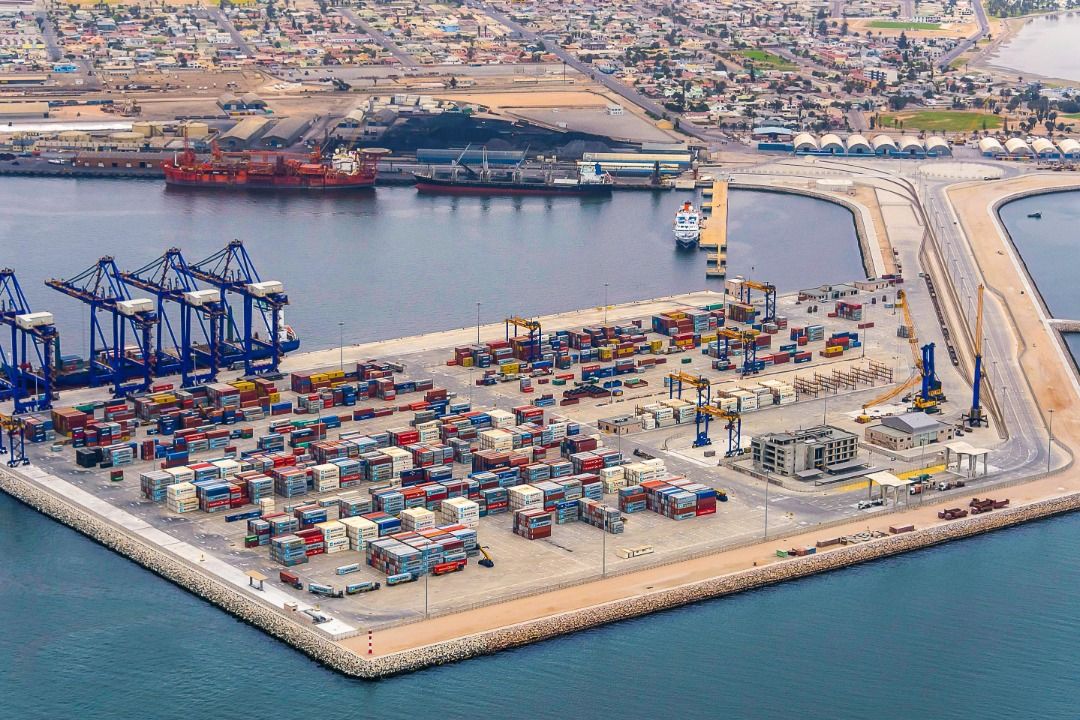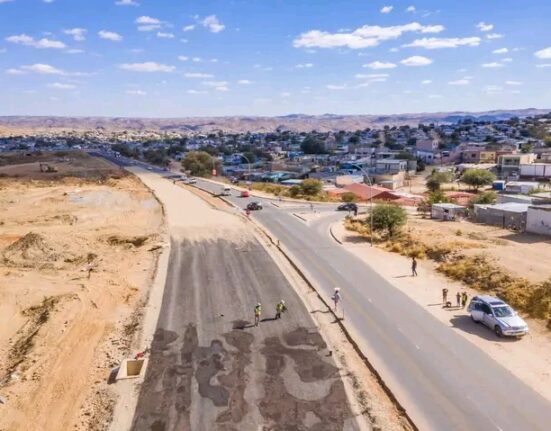Namibia, located in the southern part of Africa, may be one of the continent’s more sparsely populated countries, but its strategic geographical position plays a significant role in its growing influence as a key player in African trade. Bordered by Angola to the north, Zambia to the northeast, Botswana to the east, South Africa to the south, and the Atlantic Ocean to the west, Namibia has access to key regional markets and global trade routes, providing it with several advantages that make it a critical economic hub on the African continent.
In this article, we will explore how Namibia’s location enhances its role in African trade, the advantages it offers to businesses, and how it is leveraging its strategic position to become a gateway for trade across the Southern African region.
1. Strategic Access to the Atlantic Ocean: A Vital Gateway for Trade
One of Namibia’s most significant geographical advantages is its access to the Atlantic Ocean. With a coastline stretching over 1,500 kilometers, Namibia has direct access to one of the world’s busiest shipping routes, allowing it to serve as a vital gateway for both regional and international trade.
Port of Walvis Bay: Namibia’s Key Maritime Gateway
The Port of Walvis Bay, located on Namibia’s central coast, is arguably the country’s most important trade asset. As the country’s largest and busiest port, Walvis Bay is not only crucial for Namibia’s export and import activities, but it also serves as a key transit hub for the Southern African Development Community (SADC) and landlocked countries such as Botswana, Zambia, and Zimbabwe.
Walvis Bay is strategically positioned along one of the major maritime trade routes that connect Europe, the Americas, and the Middle East to Africa and Asia. Its well-developed infrastructure, including modern container terminals, deep-water berths, and efficient customs processes, makes it a critical shipping hub for goods moving to and from Southern Africa. The port’s ability to handle large volumes of goods quickly and efficiently has attracted numerous international shipping companies and cargo operators.
Transshipment Hub for Landlocked Countries
One of Namibia’s key advantages is its proximity to several landlocked countries in Southern Africa. Walvis Bay serves as an important transshipment hub, connecting these countries to international markets via the sea. In particular, it plays a pivotal role in providing landlocked nations like Zambia, Botswana, Zimbabwe, and even the Democratic Republic of the Congo (DRC) with access to the global market.
For these countries, which would otherwise rely on distant ports in neighboring countries such as South Africa, Namibia’s location offers a more direct and efficient route for trade. This has made Walvis Bay a critical economic lifeline for many regional economies, improving trade efficiency and reducing transportation costs.
Efficient Transport Infrastructure
Namibia has invested heavily in improving its transport infrastructure to further enhance its position as a trade hub. In addition to Walvis Bay, the country has developed a strong road and rail network that connects the port to neighboring countries. The Trans-Kalahari Railway and the Trans-Caprivi Highway, for example, provide vital links to Botswana, Zimbabwe, and Zambia, making it easier for goods to move in and out of the region.
This interconnectedness of road, rail, and sea transport ensures that Namibia can facilitate smooth and cost-effective trade, enhancing its role in regional supply chains and boosting its attractiveness to international investors.
2. Proximity to Major African Markets: A Bridge Between South Africa and the Rest of Africa
Namibia is located in a unique position between some of the largest economies in Southern Africa. To the south lies South Africa, the continent’s most advanced economy and a major trading partner for many African countries. To the north, Namibia shares borders with Angola, a resource-rich country with growing infrastructure and trade connections, as well as Zambia, which plays a key role in Southern Africa’s copper mining industry.
Link Between Southern Africa and the Rest of Africa
Namibia’s geographic position places it at the crossroads of key regional markets, making it a crucial link between Southern Africa and other regions of the continent. The country benefits from preferential trade agreements within the Southern African Development Community (SADC), which allows for duty-free access to regional markets and trade facilitation measures.
With the implementation of the African Continental Free Trade Area (AfCFTA) in recent years, Namibia’s role as a trade intermediary between Southern Africa and the broader African continent has grown even more important. The AfCFTA aims to create a single continental market for goods and services, and Namibia’s location positions it well to take advantage of this expanded trading bloc, facilitating both intra-African trade and exports to global markets.
Regional Trade and Economic Partnerships
In addition to SADC, Namibia is part of several regional and international trade agreements, such as the Tripartite Free Trade Area (TFTA) and the World Trade Organization (WTO). These agreements provide the country with preferential access to a wide range of markets, boosting its exports and making it a highly competitive player in African trade.
Namibia’s strong trade relations with South Africa are also noteworthy. As a member of the Southern African Customs Union (SACU), Namibia benefits from free movement of goods within the customs union, simplifying cross-border trade and fostering economic integration within the region. Furthermore, South Africa’s advanced infrastructure and industrial base complement Namibia’s natural resource sector, creating opportunities for joint ventures, value-added production, and supply chain collaborations.
3. Economic and Political Stability: A Safe and Reliable Trading Partner
In addition to its strategic location, Namibia benefits from its reputation as one of the most politically stable countries in Africa. Since gaining independence in 1990, Namibia has maintained a democratic system of governance, characterized by regular elections, political pluralism, and the rule of law. This stability has fostered an environment conducive to trade and investment, making Namibia a reliable partner for international and regional trade.
Business-Friendly Environment
Namibia is known for its relatively business-friendly environment, supported by low corruption levels, transparent governance, and an efficient legal framework. The country’s commitment to protecting investor rights and maintaining a favorable regulatory environment makes it an attractive destination for businesses looking to enter the Southern African market.
The Namibian government has also implemented policies to diversify the economy, reduce its reliance on mining, and promote industrialization, infrastructure development, and innovation. These efforts have created a more dynamic economy and reinforced the country’s standing as an economic hub in the region.
4. Natural Resource Wealth: A Strong Foundation for Trade and Investment
Namibia’s location is further bolstered by its wealth of natural resources, which play a critical role in its economic success and position in African trade. The country is home to some of the world’s richest deposits of diamonds, uranium, and other minerals, as well as vast fishery resources and renewable energy potential. These resources serve as key export commodities, driving foreign exchange earnings and attracting global investment.
Namibia’s mining sector, in particular, has long been a cornerstone of the country’s trade relations. As one of the world’s top producers of diamonds and uranium, Namibia plays an important role in the global supply chain for these high-value commodities. The development of a more diversified economy, including growth in sectors like agriculture, manufacturing, and services, is also increasing Namibia’s trade profile.
5. Challenges and Opportunities for Namibia’s Role in African Trade
While Namibia’s location provides significant advantages for trade, the country must also navigate several challenges:
- Infrastructure Development: Although Namibia has made significant investments in infrastructure, the continued improvement of road, rail, and port facilities is essential to maintain competitiveness and enhance trade flows, particularly with neighboring countries.
- Diversification and Value-Added Trade: The Namibian economy remains heavily dependent on raw material exports, particularly diamonds, uranium, and fish. To maximize its role in African trade, Namibia must continue to develop its value-added industries, such as manufacturing, processing, and technology, to capture a larger share of regional and global markets.
- Regional Cooperation and Integration: As regional trade agreements evolve, Namibia must continue to foster cooperation with neighboring countries and enhance its participation in initiatives like the AfCFTA to boost intra-Africa trade and leverage opportunities for market access.
Namibia’s location offers it a unique advantage in African trade, positioning it as a key economic hub in Southern Africa. With its access to the Atlantic Ocean, proximity to major African markets, and growing trade partnerships, Namibia is strategically placed to facilitate trade flows between Southern Africa, the rest of the continent, and global markets. The country’s political stability, business-friendly environment, and rich natural resources provide a strong foundation for further growth and investment. By leveraging its strategic location and expanding its role in regional and global supply chains, Namibia is well on its way to becoming an even more influential player in African trade in the years to come.













